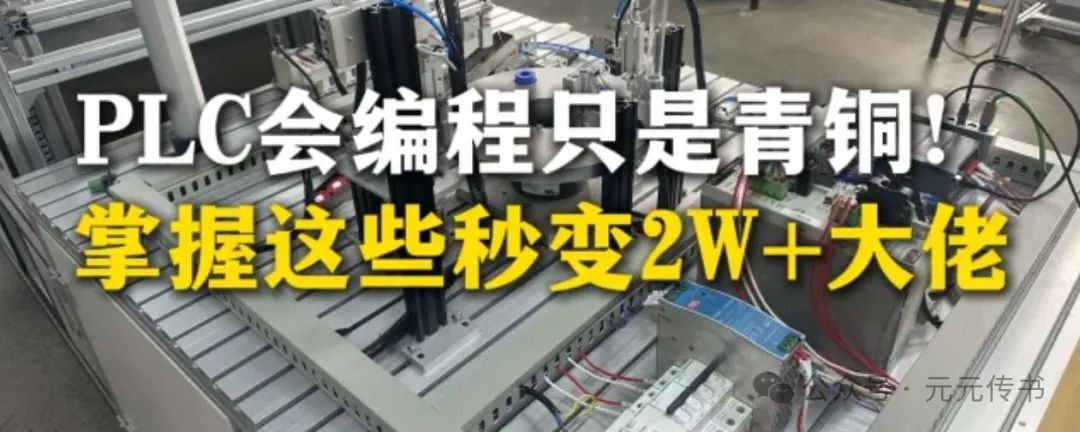
Introduction
Hello everyone! Today, I want to share with you a seemingly simple yet extremely important topic — the standardized management of PLC program modification records. Don’t underestimate this “documentation work”; it can improve your version management efficiency by over 50%!
Imagine this scenario: a sudden fault occurs on the production line, and you find that a program modified last week is the culprit. But the problem is:
-
What exactly was modified?
-
Why were these modifications made?
-
Can we quickly revert to the version before the modifications?
If your answers are “I can’t remember” or “I can’t find it,” then this article is for you! Next, I will teach you how to establish a clear program modification record standard using the most practical methods.
Why Do We Need Standardized Modification Records?
“As long as the program runs, why spend time writing documentation?” This is a common question among many engineers. Let me illustrate with a few harrowing lessons:
-
The Nightmare of “Firefighting” Troubleshooting
<span>Case of an automotive parts factory:</span>A night shift engineer modified the conveyor speed parameters but did not document it. Three days later, products showed scratches, and the day shift team spent 8 hours locating this undocumented modification.<span>Loss: $15,000</span> -
The Cost of Version Confusion
<span>Red Alert!</span>A food factory was running three program versions simultaneously: “2023 version”, “Engineer Li’s modified version”, and “Emergency fix version”, resulting in batch confusion and a complete product recall. -
The Risk of Personnel Changes
When a core engineer leaves, if the modification records are incomplete, the successor feels like they are cracking a code, needing weeks to understand the program logic.
<span>Conclusion:</span> Standardized modification records are not optional; they are the lifeline of industrial automation projects!
Essential Elements of Modification Records
A professional PLC program modification record should include the following core elements (presenting in table format is preferable):
| Field | Example Content | Importance |
|——————|—————————————|————|
| Modification Date | 2024-03-15 14:30 | 🚨 Must be recorded |
| Modifier | Engineer Zhang (ID A203) | 👤 Accountability |
| Scope of Impact | Filling line speed control module | 🔍 Quick localization |
| Reason for Modification | To resolve bottle level fluctuation issue (Work Order #J2245) | ❓ Record background |
| Previous Version | V2.1.3 | ⏮️ Reversion basis |
| New Version | V2.1.4 | 🏷️ Version identifier |
| Detailed Changes | • Adjusted PID parameters for TANK001 (P=2.5→3.0)• Commented out unused alarm point ALM_OLD | 📝 Line-by-line precision |
| Testing Verification | Continuous operation for 2 hours without fluctuation (see test report TR_20240315) | ✅ Quality assurance |
<span>Professional Tips:</span>
-
<span>Use color coding for urgent modifications:</span><span><span style="color:red">[Urgent]</span></span> -
<span>Link to work order systems:</span>For example,<span>#J2245</span>can directly link to the issue tracking system
Practical Tips for Version Management
1. Intelligent Version Numbering Rules
It is recommended to adopt a three-level version number:
<span>Major.Minor.Revision</span> (e.g., V3.2.1)
-
Major Version (3): Architectural changes (e.g., adding new devices)
-
Minor Version (2): New/optimized features
-
Revision Number (1): Bug fixes or parameter adjustments
<span>Example:</span>
A packaging factory quickly identifies through version numbers:
- V4.0.0 → Added visual inspection system (major upgrade)
- V4.1.0 → Optimized labeling logic
- V4.1.1 → Fixed conveyor emergency stop bug
2. Difference Comparison Tools
<span>Recommended essential software:</span>
-
Beyond Compare: Visual comparison of PLC program differences
-
Git Version Control (for advanced users):
git diff V2.1.3..V2.1.4 -- LAD_MAIN.prog
3. Golden Rules for Backup Strategies
<span>3-2-1 Principle:</span>
-
3 backups (local + network + offline)
-
2 types of media (hard drive + cloud storage)
-
1 off-site copy (to prevent fire/water damage)
Common Problem Solutions
❓ “The production line urgently needs modifications, and there’s no time to write documentation, what should I do?”
✅ <span>5-Minute Quick Note Method:</span>
-
Take a photo of the modification screen with your phone
-
Record the reason for modification via voice (send to yourself on WeChat)
-
Complete the template before leaving work
❓ “How to handle version conflicts during collaborative work?”
✅ <span>Locking Mechanism:</span>
-
Indicate in the shared document
<span>[Engineer Zhang is modifying - expected completion by 16:00]</span> -
Use the check-out/check-in feature of the PLC software
❓ “Old equipment lacks version management features?”
✅ <span>Workaround:</span>
-
Name program files with date and signature:
<span>20240315_FillingLine_EngineerLiModification.rar</span> -
Add a comment block at the beginning of the program:
// ================================ // Modification Record: 2024-03-15 // Modification Content: Corrected flow meter calibration value // Modifier: Engineer Wang (Contact 138xxxx) // ================================
Conclusion
Standardized modification records are like an airplane’s black box — often seen as unnecessary until an incident reveals their value.<span>Remember:</span>
“Excellent engineers not only write code but also document history!”
Your next actions:
-
Immediately check if the last three program modifications have complete records
-
Share this article within your team to establish a unified standard
-
Share your documentation management tips or lessons in the comments
<span>Bonus Template:</span>
📥 Click to download the PLC modification record template.docx
(The template includes automatic version number calculation and change impact assessment table)
Share itBookmark itView itLike it